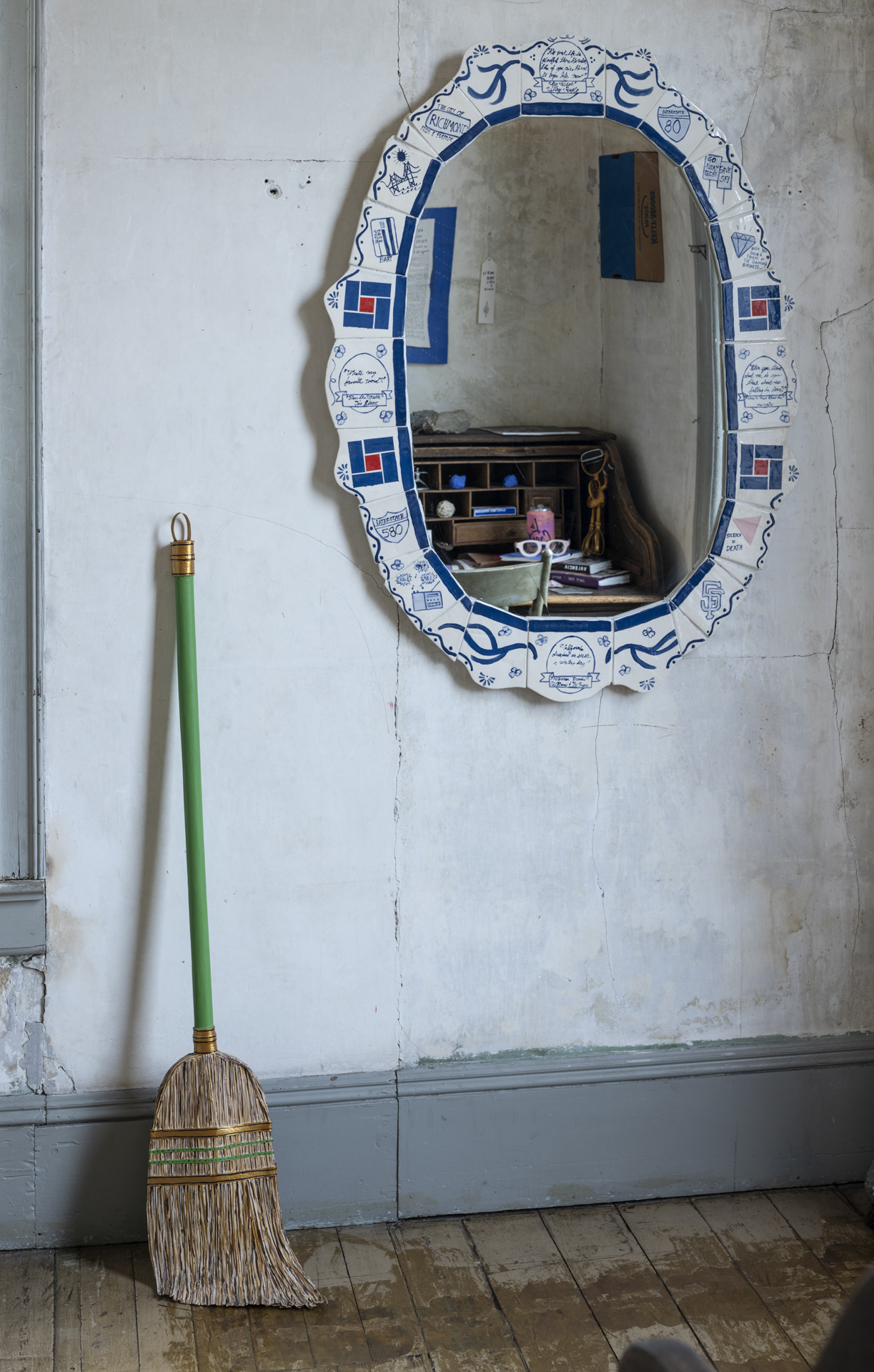I don’t often write about visual art with a sense of urgency, but you have exactly two more chances to take in the sublime and slyly interruptive work of Libby Black at 500 Capp Street. The result of a residency during which Black sifted through the archives of artist David Ireland’s former home, The Way Things Also Are revels, as Ireland did, in the beauty of everyday things. But the show, a mix of paper sculptures and new works on paper, also pulls out traces of women in Ireland’s life and practice—and inserts, with colorful aplomb, signs of queer domesticity.
Ireland is often described as an archeologist of his own home (he steadily excavated the soil beneath it until only the bravest of souls would enter the space). Following suit, Black has done some digging of her own. This is most evident in the lightwell display, a narrow, ochre-walled space on the second floor that Black has lined with works on paper. These are representations of objects in the archive, set against the unmistakable blue of a moving blanket: postcards sent to Ireland addressing his emotional distance in a relationship, images in catalogs of work by female artists, a stack of folders labeled “female nudes.”

So much of Ireland’s work on 500 Capp was about making the house’s idiosyncrasies visible and heroic. In that vein, two bronze plaques mark the dents where a heavy safe slipped its ropes and slammed into walls on its way out of the house. But one of Black’s sculptures is monumental in a very different way: Xochitl’s Bucket is a paper rendition of the supplies used by the house’s current cleaner, another woman whose work, if done well, is utterly invisible.
In the front and back parlor rooms, Black responds to Ireland’s art with equal parts respect and gentle joshing. Her installation Brooms, an array of pink and purple-handled sculptures made from paper, acrylic paint and glue (magically, delightfully upright), mirror Ireland’s Broom Collection with Boom, borrowed for the occasion from SFMOMA. On the mantle nearby, a paper tube sock (one of many scattered throughout the house) drapes languidly over an untitled Ireland concrete sculpture.

500 Capp can be overly precious about its arrangements of Ireland’s artwork and belongings, and this tendency is well met by Black’s interventions. Her approach is painstaking (paper scrub brushes! a nail clipper! a banana peel!), but the arrangements channel “teenage slob” more than “fretful conservator.” And though the objects she makes are fragile, nearly air-light, the result is warm and lived-in. Her work has truly taken up residence in Ireland’s home: painted versions of books lay on all manner of surfaces, along with glasses, watches and a pamplemousse La Croix.



